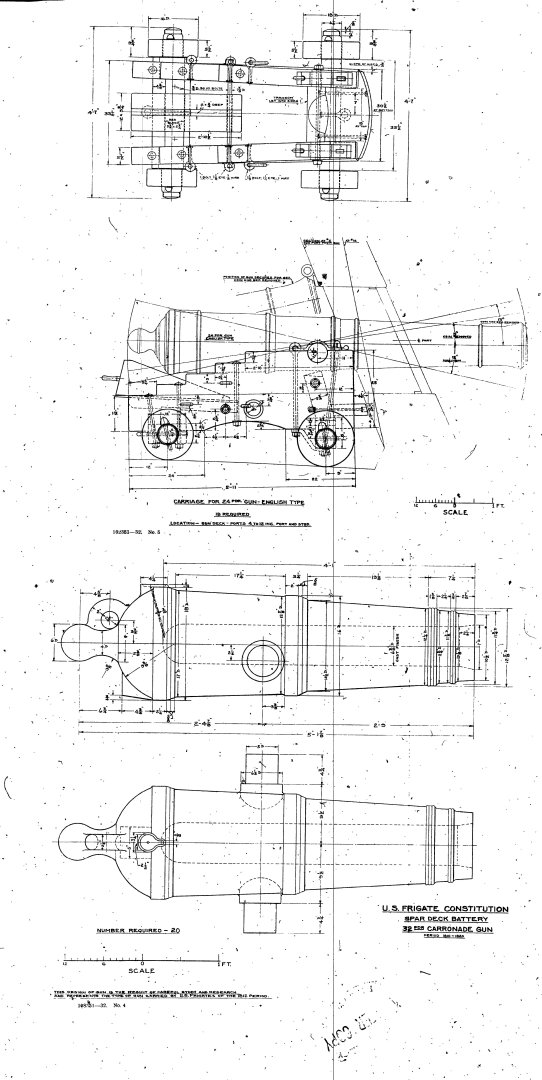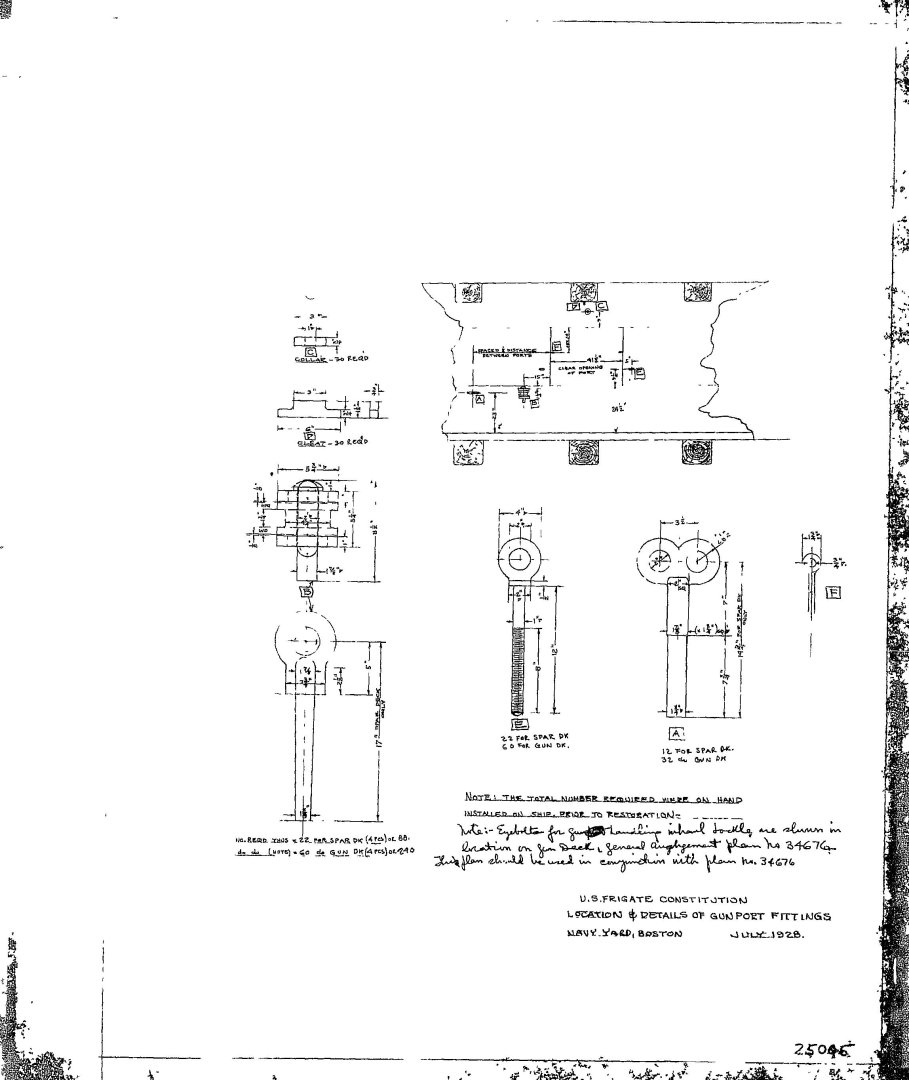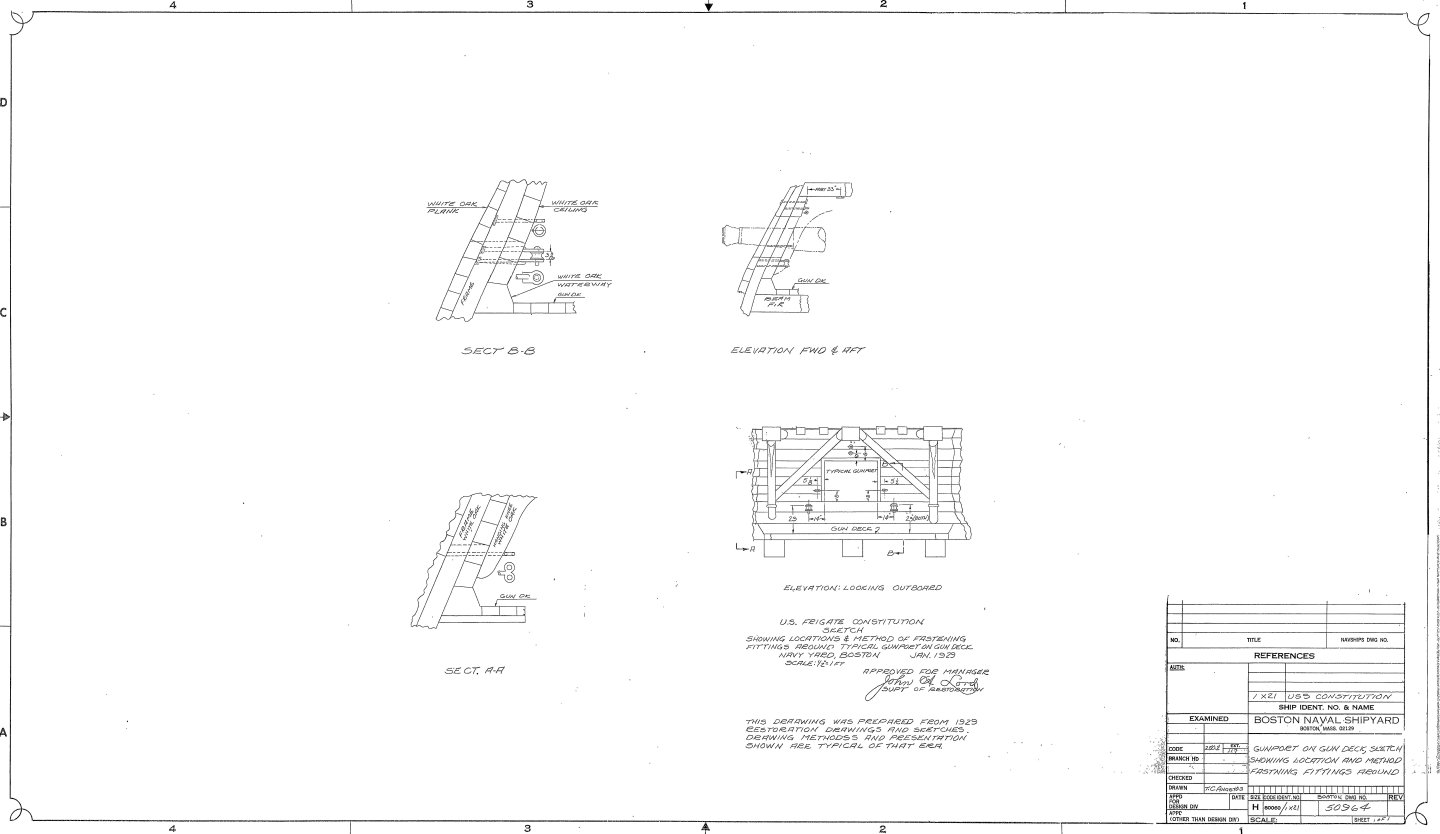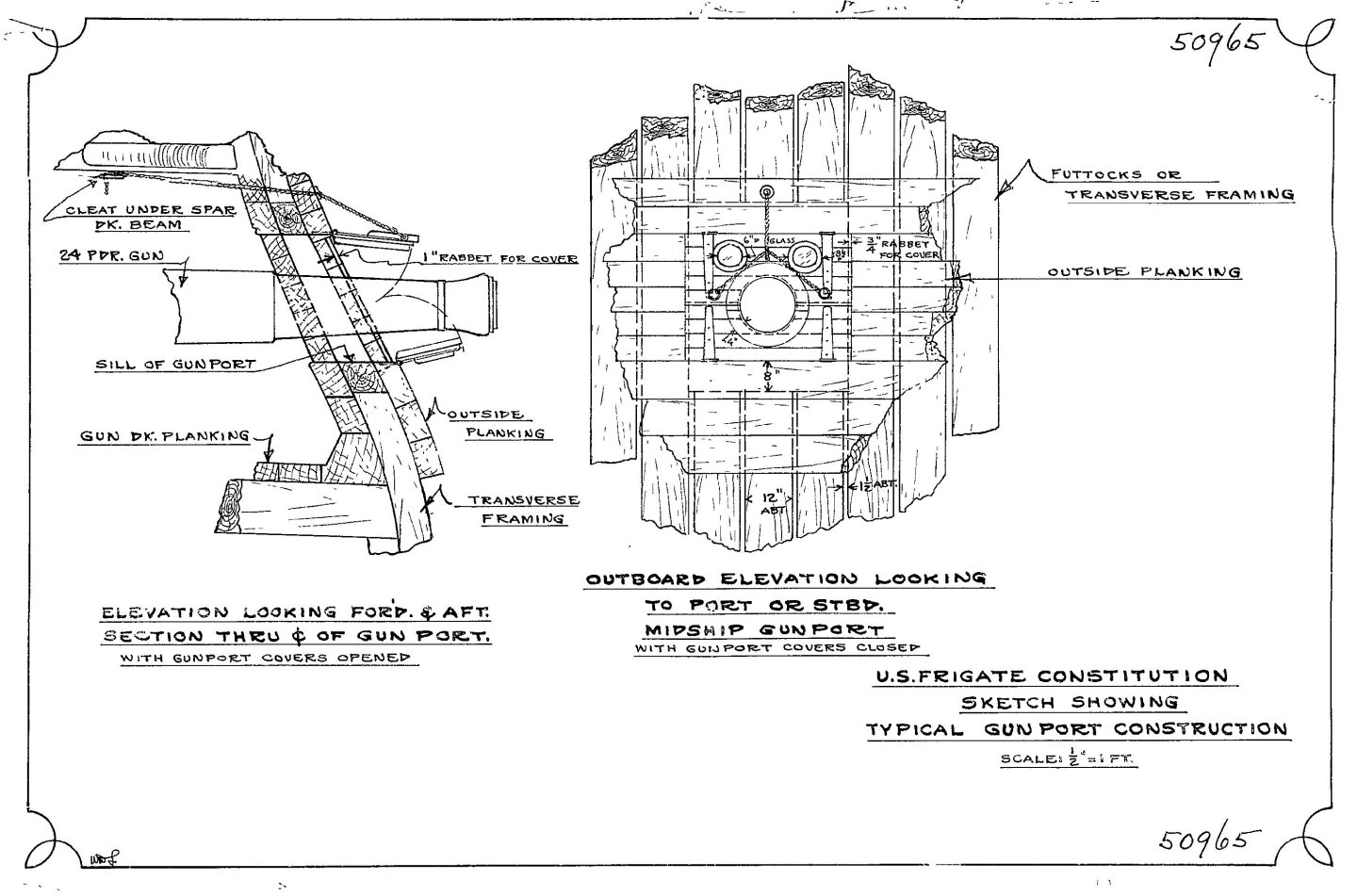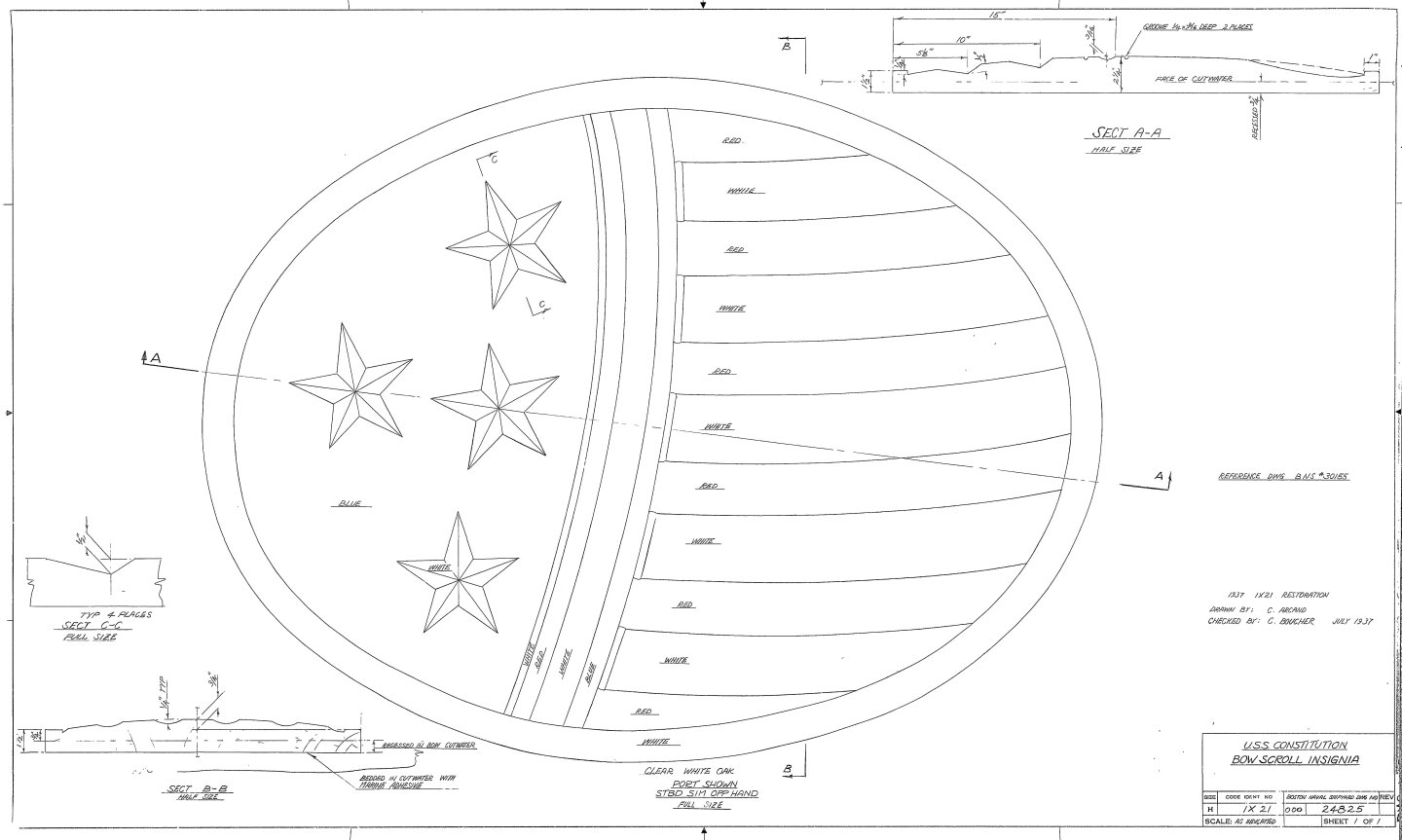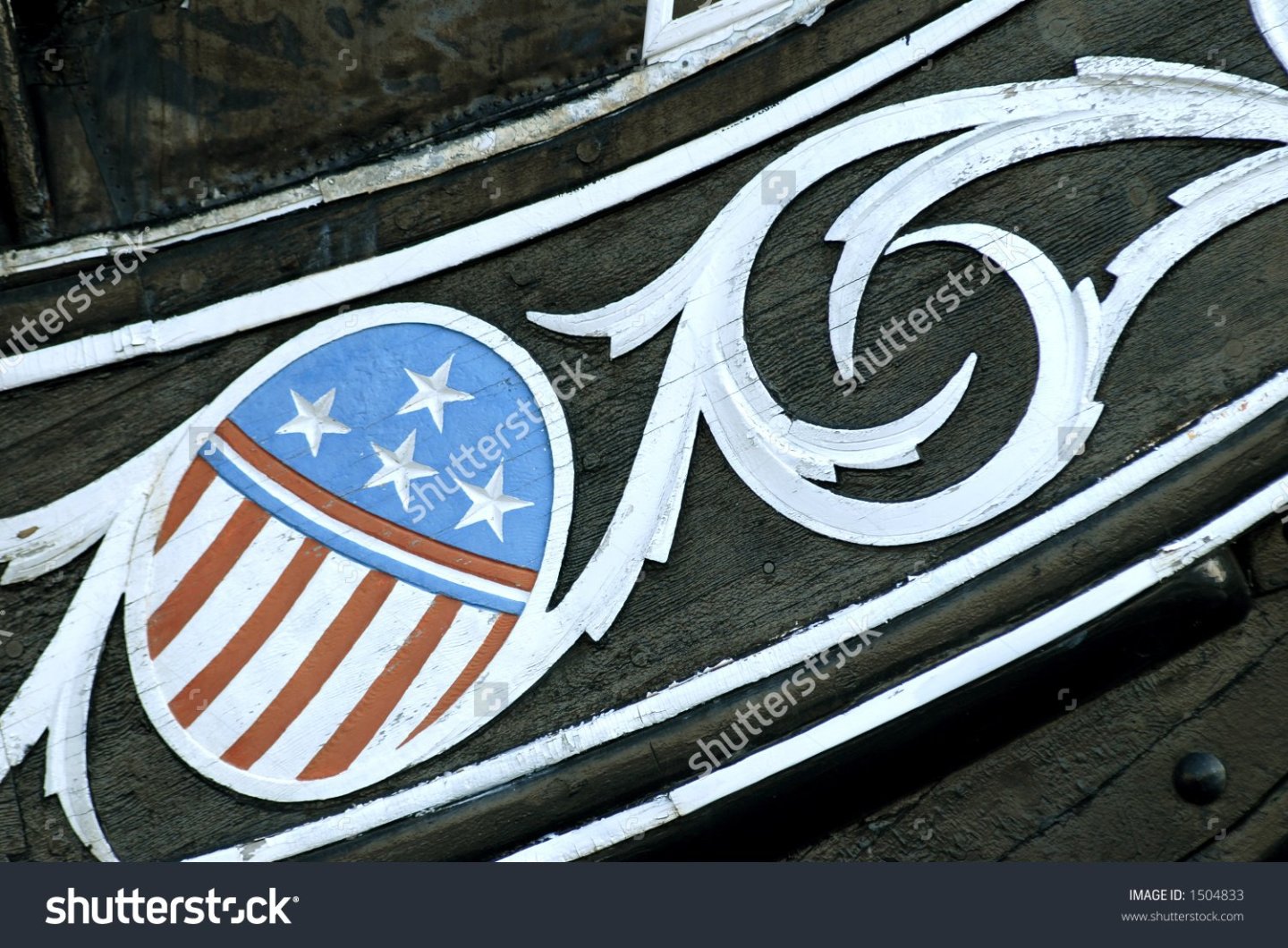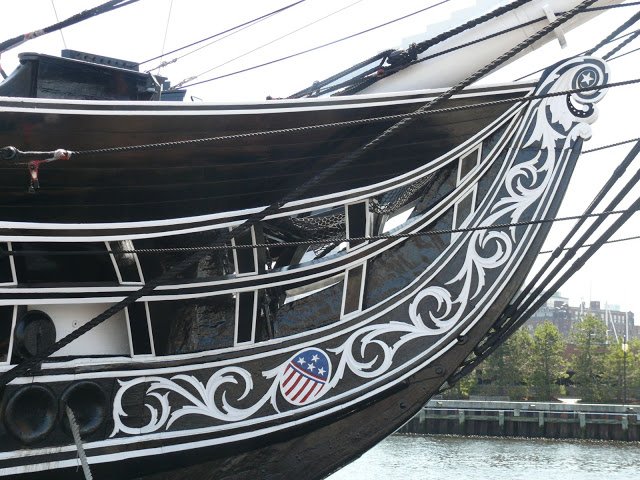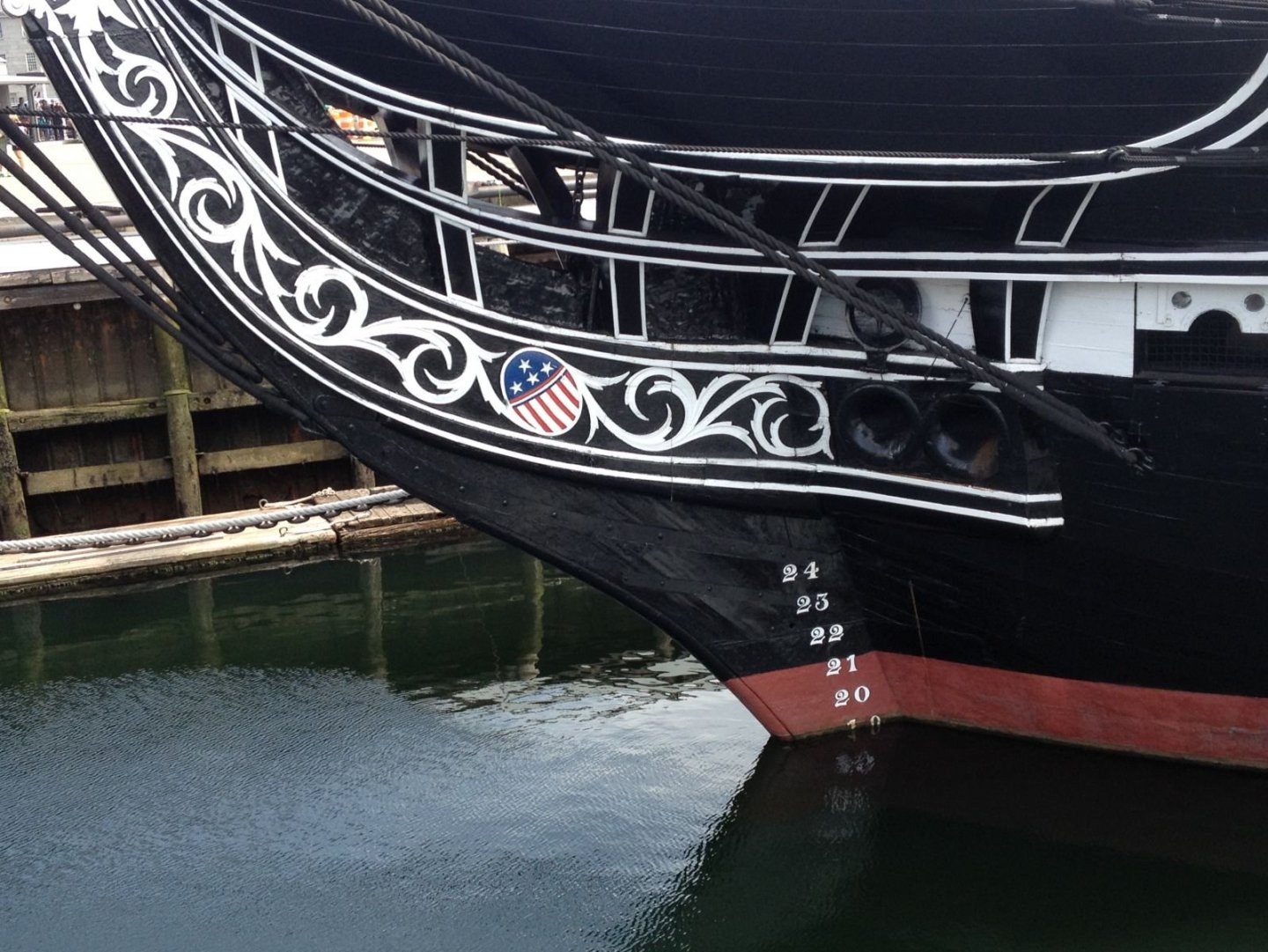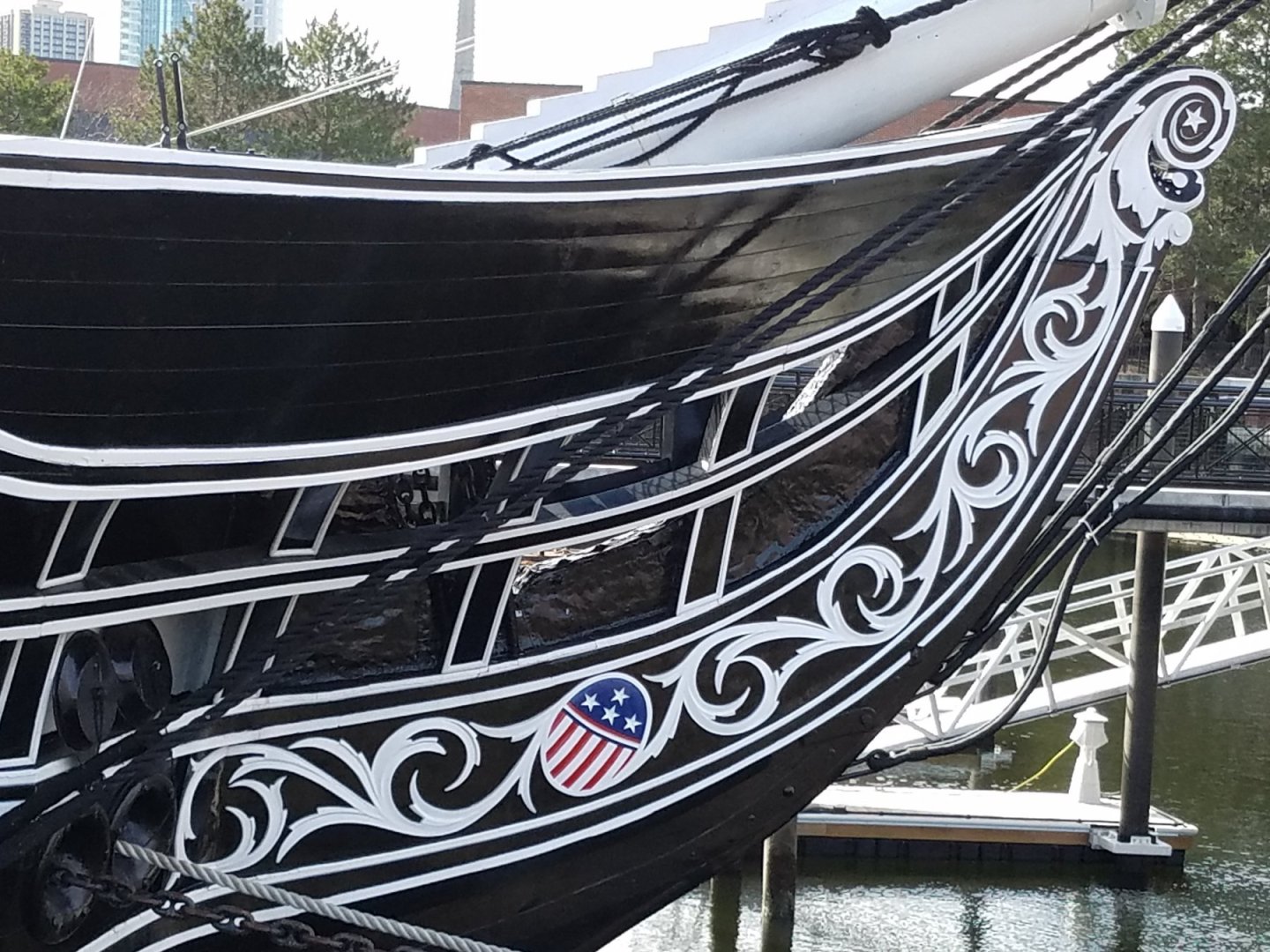-
Posts
2,632 -
Joined
-
Last visited
Content Type
Profiles
Forums
Gallery
Events
Everything posted by JSGerson
-
You were smart. You didn't attempt install the hundreds if not thousands of pseudo bolt heads on the bulwarks at 1:96 scale. Robert Hunt's practicum used the rivets from Tichy Train Group for those boltheads which I thought were out of scale even on the 1:76.8 scale MS model. It's the reason I made mine smaller using a punch. However, it looks like plastic rivets were perfect for the larger eyebolt bolts showing on the hull. Well done. Your sheaves worked out nicely as well. Both the hull boltheads and sheaves will meld into the hull and hide when they are painted black. The reason why I don't mind this is because I want the viewers to see more detail the more they look, and the closer they look. The viewers should not get bored. Jon
-
As "easy" as it is to make eyebolts, it's the shear number of them that is required that makes it a pain to make. I make small parts like this on an as required basis, so I don't go nuts making very large quantitates. I bought a bag of one thousand 1/32" eyebolts on ebay from Model Expo some time ago that didn't last as long as I thought it would. It's amazing how useful those tiny items are for all sorts of things. Unfortunately for 1/96 scale builders, 1/32" eyebolts are still out of scale in many areas. Don't forget, you still need to blacken them as well, because paint will clog up the eyes. Jon
-
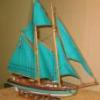
USS Constitution by mtbediz - 1:76
JSGerson replied to mtbediz's topic in - Build logs for subjects built 1751 - 1800
Great looking model! Jon -
Peter, that's a thought (now Plan D), but I would like to include the frames if I could. It wasn't so much as to "keeping lines randomly scattered around the deck to show the ship in a state of action" but to show a working ship. There is a lot of stuff on the busy decks so they are not as neat and clean as many other models show. My ropes lines are loosely coiled because they are theoretically in use, not set up for formal inspection. Presently, I don't plan on adding sails (it's taking long enough as it is), so presumably this is what the ship would look like in dock for a while, in which case the canopy frames would be set up. But then again, they didn't exist during the ship's active fighting years. I'm working this out one step at a time. I'm still trying to figure out how to attach the multitude of arched brass rods together at the hub. I've been doing a lot of thought experiments as how to precisely hold in place 7 to 8 rods, plus a ringed ornament securely enough at the same time and with sufficient surface area to apply glue such that the assembly won't fall apart as soon as I try to move or install them into their positions on the stanchions. Mustafa, at the rate that I am moving, I suspect you will be working on these very soon. It should be very interesting if you method solves my problems. Jon
-
I am building the Model Shipways' USS Constitution and saw one of your 3D printed canopy frames on Unegawahya's build log. You explained that you had a Polish friend print them for your model. I am attempting to make them myself out of brass rods, tubes, and styrene tubes, but I am progressing very slowly and don't know if I will succeed. As a possible Plan C (I already had problems drilling brass and had to go Plan B: substitute styrene for brass), would it be possible for you to connect me with your friend either through you as an intermediary or directly to me? Should I take that route, I have no idea what the cost would be. If it's reasonable, is something we can work out?
Thanks, Jon
-
Per the USS Constitution Museum, the arched canopy frames were likely installed when the USS Constitution became a U.S. Naval Academy training ship in the 1850s, so they were not installed for tourist. They have been on the ship for about 175 years. That is why I am installing them; it’s officially part of the ship. Don’t be discouraged by my efforts, I am learning like most of us builders; trial and error (mostly error) is par for the course. Use me as an example as a "glutton for punishment," not as an excuse for not doing something because it is a challenge. If you feel intimidated, follow other builders who have had more success with drilling brass and used more robust brass rod (although out of scale). I've even seen images of 3D printed canopy frames, but can't remember where; so, there are alternatives methods. So here are the pictures you requested. Please be aware the frames are not complete yet and don't stand out visually yet because there is no planking to provide a smooth background. Jon
-
I have not found any commercially made eyebolts smaller than 1/32", but at my scale of 1:76.8, that was good enough for most of my applications. Anything smaller, might be a waste of time and effort at 1:96 as they won't be easily discernable. Also at 28 gauge, a few bends and the wire will probably break and getting thread through the eye will be a trick. We are close eyebolts/per gun in the count. I get the following per gun: 4 - recoil rope (2 required per side) 2 (or 1 double) - pull-in tackle 1 - pull back tackle 5 - gun truck 2 - gun truck rings OR you could do what many other builders have done - just install the recoil ropes for a simpler, cleaner look (read less eyebolts). I didn't because I am detail anal and wanted to create a more realistic mess. Here are some drawings that might help in general.
-
I had to work out the sequence of CA gluing a block to a rail and sliding the block and rail component down the stanchion to the bottom position and have the rail slip into the block on the other stanchion with precision. Then do it again for the top rail. Those rails lengths had to be precise which meant nipping the ends of the rail and filing to shorten the brass rod within thousands of an inch by trial and error. Then gluing the rail into the block so it didn’t protrude into the stanchion’s vertical hole, about 1/64”. Invariably, I broke glue joints, crushed blocks, lost the tiny pieces if I dropped them, and had to refabricate numerous parts Now I must bring 7 arched 1/32” brass rods together into a styrene ring that is to hold them together at the center of the stairwell and add a yet to be fabricated ornament it its center. So, this is as far as I got in all this time.
-
Now the fun began. Making the connector blocks for the canopy stanchions was very delicate and tedious. My original plan required two to three drill press setups per block depending on whether it was for a corner, an open end or inner stanchion. Changing the setup was required because of the two different sized brass rod/tubes that needed to fit into the blocks. After a few haphazard starts, I realized that all that was necessary was to drill a 1/32” passthrough hole with the drill press for the 3/32” brass tube which will be the vertical stanchion. This hole left an opening with only a 1/64” wall outside of the hole. Precision was required. The other holes for the 0.020” rod (horizonal rails), were a little more forgiving and was done with a hand drill fairly quickly. Cutting the 1/16” cube from the 1/16” square styrene rod was done with my mini miter block with a properly set stop and a razor saw. However, a 1/16” cube of styrene with holes drilled through it almost to its edges created a very fragile component with very little surface area remaining for gluing. I slipped on the unpainted styrene blocks again for fit.
-
It has been over a month since my last posting of the progress of my model. I have not been idle but working on it at my usual pace…slowly. I made very little progress considering the time I spent. For the first railing and canopy structure I chose the companionway and skylight frame because it was large and looked like it was the easiest. I drilled seven 1/16” holes for the 1/16” base sleeves which were cut from a 1/16” brass tube. The stanchions were cut from 3/32” brass tube and inserted into the sleeves for fit.
-
I would never pass judgment on the model builder's choices, so much is involved. In this case, there is no correct selection for the carronades. Either you match what is on the the ship today and have the incorrect style armament or install the correct 1812 style guns and not be true to what the ship has on board. It's the builder's decision. Jon
-
To be honest, I did not pay attention to the asymmetry because I was wasn't really aware of it at the time. The differences are so slight I cannot discern the differences at this small scale with my eyesight. I serious believe that most people wouldn't even recognize the differences even if it were pointed out to them on the model. So, I got away with this small error. I'll probably make a whole lot more before I'm done. Jon
-
I looked at all of the museum model images I had, especially the 1812 Hull model. There was no consensus. The Hull model didn't even show the sea steps. And the other models, constructed as early as 1870, showed all the combinations: all black, all white, matched the hull adjacent to the steps. One model even had a Jacob ladder instead of permanent steps. I imagine the coloration may have changed anytime time the hull was painted to the captain-at-the-time's whim. So the choice is yours. Jon
-
The following is from the USS Constitution Museum: As stated above, all but two carronades are inaccurate British guns replicas with the remaining two gun replicas closer to the 1812 pattern. Somewhere I read in the USS Constitution Museum documents that the plan is to replace the inaccurate carronades with the 1812 style at some future date. Therefore, I decided that ALL my model's carronades will be the more accurate 1812 style (screw type elevation mechanism). Jon
-
Thanks for letting me know you had started a build log; I'll following along. I was not aware of the Archer 3D decals so I did not consider them when figuring out how to make the pseudo bolt heads for the hull. Would I have used them had I known about them, I don't know. You mentioned that you felt like you were "cheating" when making the nail divots in the copper plates. You didn't. You created a tool to get the job done to your satisfaction. I thought hard about making a stamp for my nail divots but decided that the results of the stamp would have been too out of scale for my tastes. Even at full scale, the indentations are difficult to see. If I didn't make divots, the copper surface would have been smooth and shiny, and that would have been wrong. So, I tried the "sandpaper" technique to suggest to the viewer there was texture to the copper surface. You may have gotten away with the same technique if you had used finer sandpaper due to your smaller scale. In the end, your copper plates will be the envy of many future builders. Those airports you fabricated are fantastic. Just remember, the port frame lies flush to the hull surface and only the eyebrow protrudes. However, once they are painted black like the hull, they will still "disappear." They even do on my 1:76 model. I look forward to your future posts Jon
-
I'm being very critical so don't take this wrong. It appears from the photos that your beautifully cut pieces may be a tad too wide/thick (for lack of a better term). Looking at the line drawing and comparing it to the cut pieces, it seems to be the cut pieces are too wide by a width of the line. It's as if you cut the pieces to the outside of the line when it should have been to the inside. This may be an optical illusion, as we are talking thousands of an inch, but these pieces need to fit on the trail board with room for the white edging. The tolerances are very tight. Have you dry fitted these few pieces yet. I would hate to have you realize, that when all the pieces are put together, they won't fit. I hope I'm wrong Jon
About us
Modelshipworld - Advancing Ship Modeling through Research
SSL Secured
Your security is important for us so this Website is SSL-Secured
NRG Mailing Address
Nautical Research Guild
237 South Lincoln Street
Westmont IL, 60559-1917
Model Ship World ® and the MSW logo are Registered Trademarks, and belong to the Nautical Research Guild (United States Patent and Trademark Office: No. 6,929,264 & No. 6,929,274, registered Dec. 20, 2022)
Helpful Links
About the NRG
If you enjoy building ship models that are historically accurate as well as beautiful, then The Nautical Research Guild (NRG) is just right for you.
The Guild is a non-profit educational organization whose mission is to “Advance Ship Modeling Through Research”. We provide support to our members in their efforts to raise the quality of their model ships.
The Nautical Research Guild has published our world-renowned quarterly magazine, The Nautical Research Journal, since 1955. The pages of the Journal are full of articles by accomplished ship modelers who show you how they create those exquisite details on their models, and by maritime historians who show you the correct details to build. The Journal is available in both print and digital editions. Go to the NRG web site (www.thenrg.org) to download a complimentary digital copy of the Journal. The NRG also publishes plan sets, books and compilations of back issues of the Journal and the former Ships in Scale and Model Ship Builder magazines.


